Last updated: April 15, 2021
Article
National Park Service Scientists Reflect on Value of STEM Leadership for Girls, Young Women

NPS
“If you are successful, it is because somewhere, sometime, someone gave you a life or an idea that started you in the right direction. Remember also that you are indebted to life until you help some less fortunate person, just as you were helped." — Melinda Gates, Philanthropist, Innovator, and Co-founder of the Bill and Melinda Gates Foundation
Who would we be if not for the leaders among us—those who encourage, inspire, and provide a positive role model for those entering the work force? Leaders come to us in many forms, from neighbors to co-workers to professional pioneers. They may not view themselves as leaders, or recognize their influence on others, but they are, indeed, leaders in every sense.
Female scientists with the National Park Service Natural Sounds and Night Skies Division (NSNSD) gathered in a round-table discussion to reflect on the leaders in their lives whose guidance inspired them to pursue the STEM (Science, Technology, Engineering and Math) subjects that led them to the work they do today. With expertise ranging from geospatial modeling to biology to computer science, their skills are used to protect, maintain, and restore the natural soundscapes and night sky views/environments in national parks.
Many of these scientists also have backgrounds as educators. They discussed the challenges and rewards of engaging female students in STEM disciplines—fields historically dominated by men. Although female participation in STEM has increased in the last decade due to a range of innovative, educational initiatives, a 2017 U.S. Department of Commerce study finds that women continue to be underrepresented in STEM jobs, with contributions accounting for only 24% of the workforce.
NSNSD scientists Sharolyn Anderson, Emma Brown, Li-Wei Hung, Katie Nuessly, and Ashley Pipkin explore strategies for bridging this gap, the value of STEM instruction, and leadership roles that female scientists such as themselves can take to stimulate change.
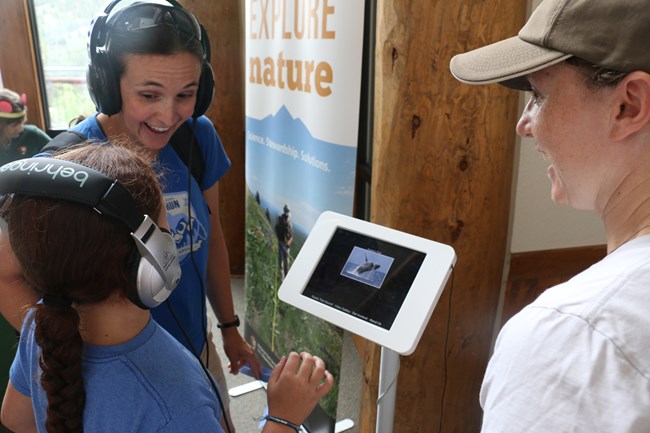
Photo by Julie West / NPS
Why is it important to involve women and girls in STEM education, and why might this be beneficial to the National Park Service?
Sharolyn: The NPS mission states: "The National Park Service preserves unimpaired the natural and cultural resources and values of the National Park System for the enjoyment, education, and inspiration of this and future generations." This mission requires skill and knowledge, which STEM education provides. Diversity and equality in the workplace provide a foundation for confidence and strength, and also the environment for all to achieve their best.
Emma: When you look at the distribution of women in STEM subjects in the Federal Government or the National Park Service specifically, there’s definitely an imbalance, and if we want to see that change, then students and young women are the change that will make that happen. It’s on us to make sure that they know that these are exciting subjects, and they can contribute measurably when they grow up.
Katie: Young women in the United States are typically not encouraged to pursue STEM topics. We usually see a big drop off in girls’ participation in STEM around the 6th grade. An emphasis on STEM for girls is important to make sure that we keep them in the (STEM) pipeline through high school and on into college, should they decide that that’s what they want to do.
Li-Wei: I don’t think there’s anything biologically different that separates men from women in doing math and science. I see it as an equal opportunity for both genders.
What misconceptions persist that might hinder girls’ involvement in STEM subjects, and why?
Sharolyn: Research does show a drop in 6th grade, but there is a recommendation to target females in 4th grade so that we can keep them interested in the sciences. I think a big part of this is that there are not many female role models. There are fewer women in computer science today than there were back in the 1980’s. Why?—because professors in computer science are typically not female. You are pretty much looking at an all-male area. And when you look at the K-12 classroom, math teachers are typically men. There is a need for (female) role models, and I think that’s why it is so important for us to be in this room and speak out.
Katie: I think it’s a confidence issue. Research shows that if a young boy gets a B or a C in a subject, he says, “OK, I got this. I’m learning it.” Whereas if a girl the same age in the same class gets the same grade, she thinks, “I’m bad at this. I should do something else.” You’re already seeing a confidence gap by the 4th and 5th grade between the two genders when it comes to STEM subjects. That’s where role models come in, and that’s where family comes in, to say: “No, you’ve got this. You ARE good at this.”
Ashley: Along the lines of confidence, it’s not only in the classroom. As a field biologist, there’s a common misconception that women can’t be out alone in the big, bad, scary wild. In times when I’ve gone out on hikes by myself, I’ll meet people on the trail who will say, “Hey, what are you doing out here by yourself?” My male colleagues don’t get that same level of curiosity when they are walking outdoors alone. This misconception that women can’t be outside in a national park or the wild alone could inhibit young girls or women from wanting to take a job like a field biologist.
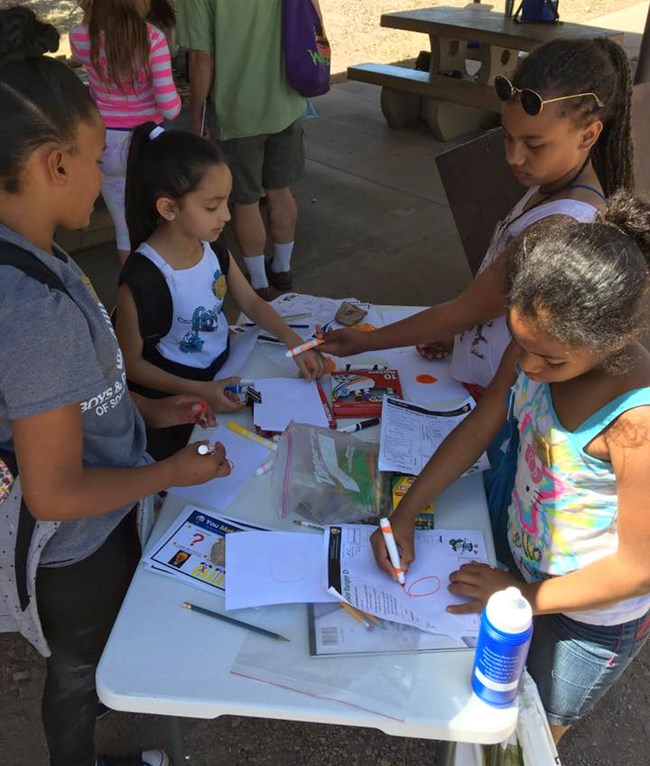
Photo courtesy of Ashley Pipkin / NPS
An incredible variety of STEM opportunities are available for women and girls today then there were ten or more years back. These range from workshops to conferences to camps. What is exciting about STEM education today, and what are examples of approaches that are improving the STEM landscape?
Sharolyn: Many cities, including Denver, offer Girls in STEM programs in their schools. Women tend to do better in science when they are together. These programs support that.
Katie: Institutions are now marketing specifically to girls, using fun flyers, even colors and other details that might attract interest. When I taught STEM to the 6th grade in the public school system, activities were designed to get kids to use their imaginations in a way different from most cookie-cutter projects. I tried to create an open creativity process, and introduced fun engineering projects. Oftentimes the girls would say, “What is it that you want me to do, and I’ll make it?” I would work with them and say, “This is your thing! What do you want to create and imagine?” Sometimes girls need space and encouragement to try new things. STEM can be a cool learning environment that helps women find their voice.
Li-Wei: In most of the colleges I attended, it was common to find women science groups. I am thinking particularly about a physics and astronomy group I was in. There were weekly meetings and things like that. They formed a support group to make you feel that you were not alone.
Emma: Through a colleague, I learned about an online network for women in the sciences that connects women who code in the statistical programming language R. I think it’s cool that you don’t have to be physically somewhere to connect with your peers. Another example of opportunities is a Girls & Science event that our division is supporting at the Denver Museum of Nature & Science. It’s a one day event where 4th through 8th grade girls are invited to meet scientists, mathematicians, engineers, and other professionals, find out what they do, try out some of the tools they use, and learn about the subjects. I’m sure there are other opportunities like that around the country; this one happens to be in our own backyard.
The Denver Museum event strikes me as unique for also targeting the families of girls. Why might this model be effective?
Ashley: I think many of the girls will probably be there because their parents understand the importance of their daughters’ participation in STEM programs, and they want to encourage them. By involving parents and families, you help address implicit biases that we all have and don’t realize. Families that may have these biases might see something that shakes those perceptions. And parents might tell other people about the event and their involvement. In this way you involve wider audiences; you extend the STEM web beyond the individual child.

Image courtesy of Katie Nuessly
In what ways have you taught or mentored women and/or girls? And how did you encourage their participation?
Li-Wei: I used to be a tutor when I was a college student. I would sit on the first floor of the dorm, and if anyone came by with a math or science question, I would try to answer them. There was a girl who came by regularly who was struggling in math. I tutored her regularly over a quarter and saw her improvement. Originally she was not confident. She would say, “I can’t do this. This is too difficult.” I guided her step by step. Eventually she saw the logic behind it and became more confident. I was really happy to see that growth.
Sharolyn: I taught at a university in Australia that had an honors program. Once I had a student who was good, but I saw her potential to be better. This student wanted to do honors but was hesitant. I persuaded her, and she did it. Not only did she get what’s called “the first class,” she got a full ride to get a PhD doing remote sensing looking at grasslands! This is a person who was one of those shy girls in the back of the room. Sometimes you get those opportunities (to help). Sometimes you don’t. You do what you can do. I think science is so much fun.
Katie: As teachers, we need to be aware how our actions may emphasize certain gender behaviors. It’s been shown that if a boy raises his hand, and if a girl raises her hand, you’re much more likely to call on the male. I would always check that bias. Also, learning and activity styles don’t have to be Q & A. I did a lot of small group work when I was teaching. Many young women feel more comfortable sharing if they are in a small group, whereas they might not in a huge class. Girls who weren’t raising their hands at the start of class were very engaged in small group projects. Having those different entry points for people who are more dominant or less dominant makes a difference.
Li-Wei: I taught a lab before, and have seen situations, not necessarily gender related, where some people in the group are more dominant than others, whether male or female. When I would ask a question, usually the dominant person would answer. So I would encourage others to give their perspectives, and I think that helps in teaching, whether the quieter ones are female or male.
Ashley: In graduate school I had a National Science Foundation (NSF) fellowship that supported STEM in K-12 classes. Having a mix of male and female teachers was helpful for the girls—to see female scientists and be introduced in the classroom. Also, there’s a stereotype for the kind of girl who is a dominant personality—who always answers the questions right, is active, and wants to discuss, like Hermione Granger in Harry Potter. These kinds of girls are sometimes made to feel as if they are aggressive or annoying, i.e., “know-it-alls.” That can be a challenge for young girls. Trying to alleviate that as a teacher is an important experience in the classroom, and something I would always try to do.
Katie: Another time in my life I led an all-woman expedition as an outdoor guide in the Sangre de Cristo Mountains of New Mexico. It was a powerful experience. In the wild, you have to figure things out for yourself. Day One was really scary, but by the end of the three weeks, the women were self-sufficient. I watched them go on to become teachers and educators and pass those skills to other people. Where there is a will there is a way. I really believe that.
Who were some of the mentors in your life who encouraged you to pursue your STEM passions?
Ashley: I was in a bio-geography class in college and thought, “I think I like this.” One day my professor told me, “You’re the best student in class.” And I thought, “Really, me?” I didn’t know. He encouraged me to participate on his research project. There was another female graduate student working on it, and she has also been a great inspiration. I spent a summer in Congaree National Park working in incredibly hot conditions and terrible humidity, but I was so excited for the opportunity, and learned so much that summer. I did it again the following summer and led the program. The experience gave me confidence. My professor was also the first person to suggest graduate school. They were both really helpful in guiding me toward my path.
Emma: There have been a lot of people in my life who have helped me down the path that I have chosen. It doesn’t have to be a leader or a mentor from the sciences who encourages women to find their way into STEM, just someone who believes in them and shows confidence in their abilities. I majored in American Studies and found an advisor who encouraged me to pursue an undergraduate thesis. She helped me find a connection between my environmental science interests and the humanities. So I wrote a thesis about the Appalachian Trail and our connection to wilderness in this country. I think that was definitely a gateway to working where I do now, and I am grateful for her guidance and encouragement for helping me find where my interests connect.
Li-Wei: I attended a girls-only high school in an honors class focused on STEM when I was in Taiwan. I remember something my math teacher, who was also female, told our class: “This path might be rough, but don’t worry, and don’t feel weird. Yes, many of your colleagues will be male, but don’t worry about your future life opportunities. Just go forward!” That was a comfortable message for us. In high school I was interested in earth science, and my teacher told me that if I was really serious about earth science and also astronomy, then I should pursue a physics degree, because physics is the foundation for astronomy. I doubled in physics and astronomy in college. Afterwards, I decided to pursue a PhD. Different subjects open up different paths, and you never know until you try.
Katie: I believe in STEM initiatives, but there also have to be jobs at the end of the pipeline for women in these careers. There needs to be a call to action. The reality is that a STEM career is competitive, and there’s not a lot of opportunity out there. I’m very fortunate to have the position I have. It would be rewarding to be able to inspire these girls and also tell them, “There are so many cool jobs waiting for you.”
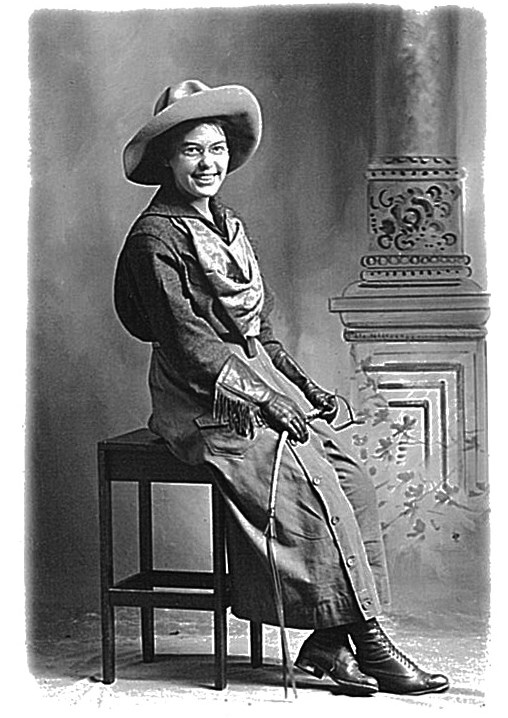
NPS
What are you most proud about the work you are doing for the NPS? What keeps you showing up and wanting to stay involved?
Emma: I love hearing when friends, family and acquaintances go to a national park and have a spectacular night sky experience, or hear elk bugling in Rocky Mountain National Park and they tell me about it and they say, “Now I understand why you do what you do.” This makes me more confident about what I do, and I love that I get to share that experience with the people I love, too.
Sharolyn: I think the NPS is a wonderful place to do something you believe in.
Katie: I love taking people to national parks. It’s a point of pride, whether I tell them I work for them or not. You see (the park) through someone else’s eyes that may not have seen it before. I am a small part of this, but I get to spend my 40 hours a week making this experience as awesome as possible. I wanted a career in conservation, and I have one! I think that’s really cool.
Li-Wei: I am happy to use my technical skills applied to my job and apply something concrete for management. I like having these STEM skills to do my job and make a difference to protect what I care.
Ashley: I also feel that I have this amazing opportunity! People ask, “How did you get that job?” I feel super lucky. I have this amazing job that protects these two really special resources (natural sounds and night skies) that we all enjoy when we go to parks, and I get to bring attention to how special they are.
Sharolyn: I want to add that getting a job here is one of the hardest things on earth. It’s not like you get to come in off the street. You were siphoned through so many nets to get here. You are lucky, but you are also really good, or you wouldn’t be here. If you work for the government, you better be the best. And you are! You are amazing. We don’t hear it enough.
Katie: We all worked really hard to be in this room today.
Does anyone want to give a shout out to a woman who has been a great role model and inspiring leader in your life?
Ashley: I would give a shout out to Jane Goodall and Sylvia Earle. I met Sylvia when I was at National Geographic and she was really amazing and inspirational.
Katie: In my personal life I want to thank Sandy Allan, Molly Stoddard, Elsa Haubold … and so many more. They helped me get here.
Sharolyn: I would say my former PhD advisor Elizabeth “Libby” Wentz, who is now Dean at Arizona State University—one of the few female deans, and the first ever, for their School of Geographical Sciences and Urban Planning. She was chair, and now is dean, and she’s still my friend. She also has two kids and a husband and is doing the whole thing. She’s great.
Emma: Rachel Carson. I read her works in college, and they were pretty influential to me as I was developing my personal conservation ethic.
Thank you, everyone, for the free-ranging, good discussion today, and for the work you do on behalf of the National Park Service!
Thank you, everyone, for the free-ranging, good discussion today, and for the work you do on behalf of the National Park Service!
Article by Julie West, Communications Specialist, NPS Natural Sounds and Night Skies Division
..................................................................................................................................
Biographies
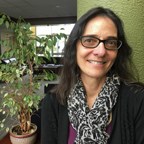
Sharolyn Anderson applies her knowledge of geospatial modeling and computer science to assess night sky and natural sound resources in parks. Responsibilities include researching the effects of light and sound on wildlife, and assisting parks with management strategies of these resources.
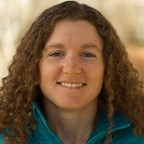
As an acoustical resource specialist, Emma Brown monitors and measures sound conditions in national parks, and helps with the analysis and reporting of this data. Parks can use this information to identify noise sources and develop management actions designed to mitigate impact.

Li Wei Hung is a night sky scientist working on light pollution related research. She uses her expertise in the physical sciences, programming, and data collection to measure sky brightness in national parks and create models that accurately show light from both celestial and outdoor light sources.
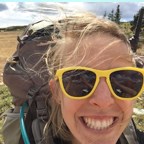
Kathryn (Katie) Nuessly works as an ecologist using computer models to study how noise pollution affects national park visitors and wildlife. She also develops science communication products, like infographics, to effectively communicate the results relevant to management.
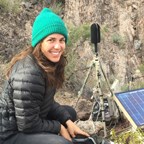
Ashley Pipkin is a biologist and resource specialist based in Lake Mead National Recreation Area, Nevada. In her work she measures and synthesizes sound and photic data throughout the Pacific West Region, helps parks manage these resources, and educates park visitors and communities.
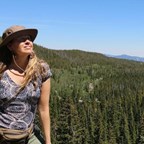
As a communications specialist, Julie West creates web articles and a range of print and digital media content to communicate the ecological and cultural value of naturally dark night skies and natural sounds in parks, and the work of the division and parks in protecting these resources.
Additional Profiles on NPS Programs and Women in Science
- Careers in Science: Meet some of the people who help protect the plants, animals, sounds, and oceans in the National Park Service
- Telling All American's Stories: Women's History: Explore the remarkable legacies of American women.
- Mosaics in Science Internships: The Mosaics in Science Internship Program provides youth that are under-represented in natural resource science career fields with on-the-ground, science-based, work experience with the National Park Service.
- Women's Rights National Historical Park: Women’s Rights National Historical Park tells the story of the first Women’s Rights Convention held in Seneca Falls, NY on July 19-20,1848. It is a story of struggles for civil rights, human rights, and equality, global struggles that continue today.
- It's All About Bats: NPS Wildlife Veterinarian Michelle Verant shares expertise on bats and white nose syndrome.
- Women in Science: Fisheries: Yellowstone National Park presents a unique opportunity for young professionals pursuing a career in fisheries management and research.
- International Day of Women and Girls in Science Hightlight: Article profiles Wilderness Fire Scientist Carol Miller
- Women in History Video, Explore Nature, Facebook: https://www.facebook.com/NatureNPS/
Tags
- leadership
- women history month
- careers in science
- careers in science series
- careers
- park science
- women
- women history
- women in science
- stem
- stem education
- women in the workplace
- natural sounds and nigh skies division
- national park service
- profile
- natural sounds
- night skies
- leaders
- women leaders
- learning from leaders
- women in history
- female leaders
- women in stem
- stem power
- science at work
- women's history
- science nps
- international women's day
- science education day
- science
- women of the nps
- behind the scenes
- working with the public
- in the field
- women in science and technology
